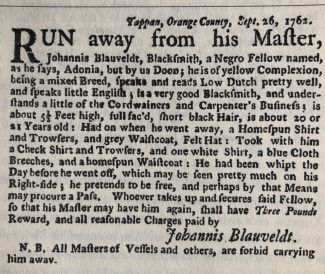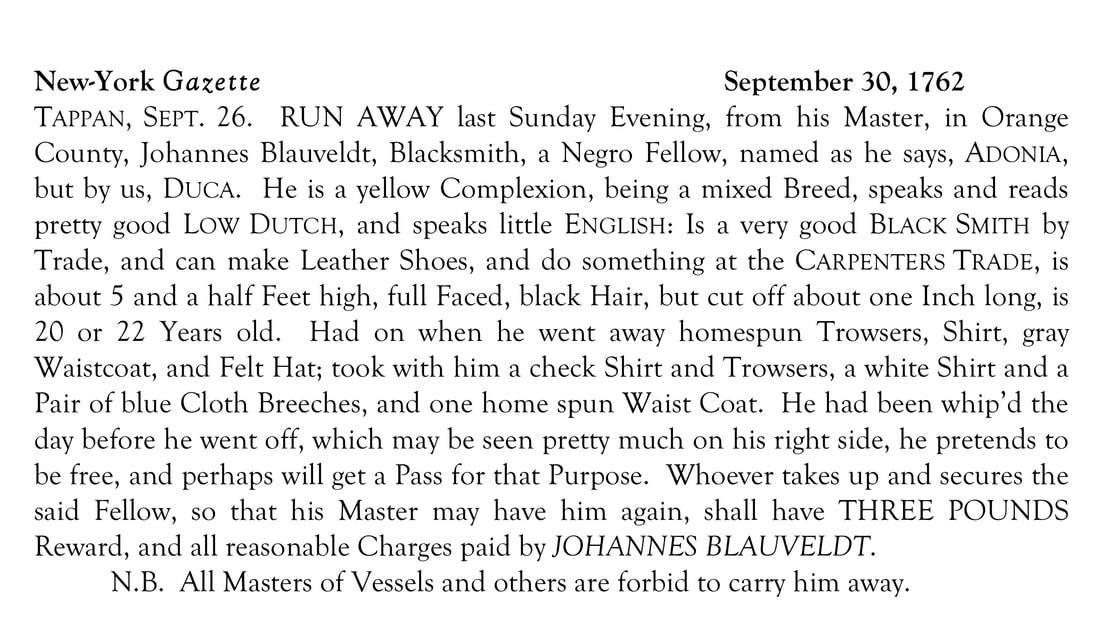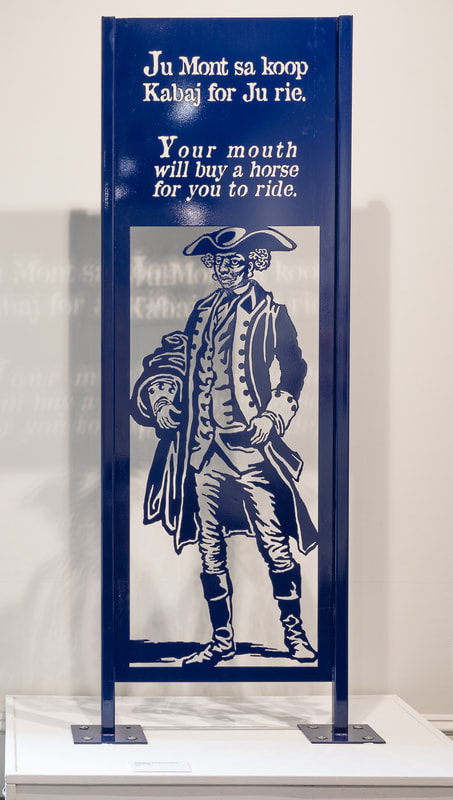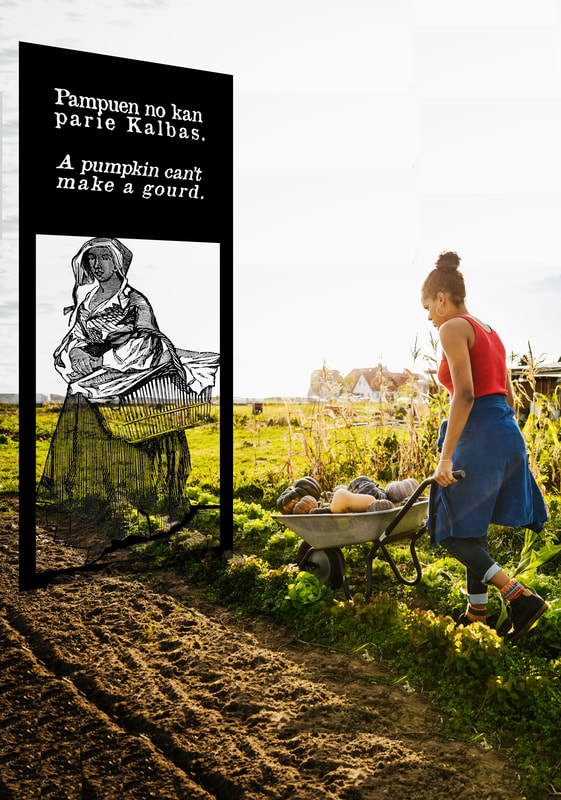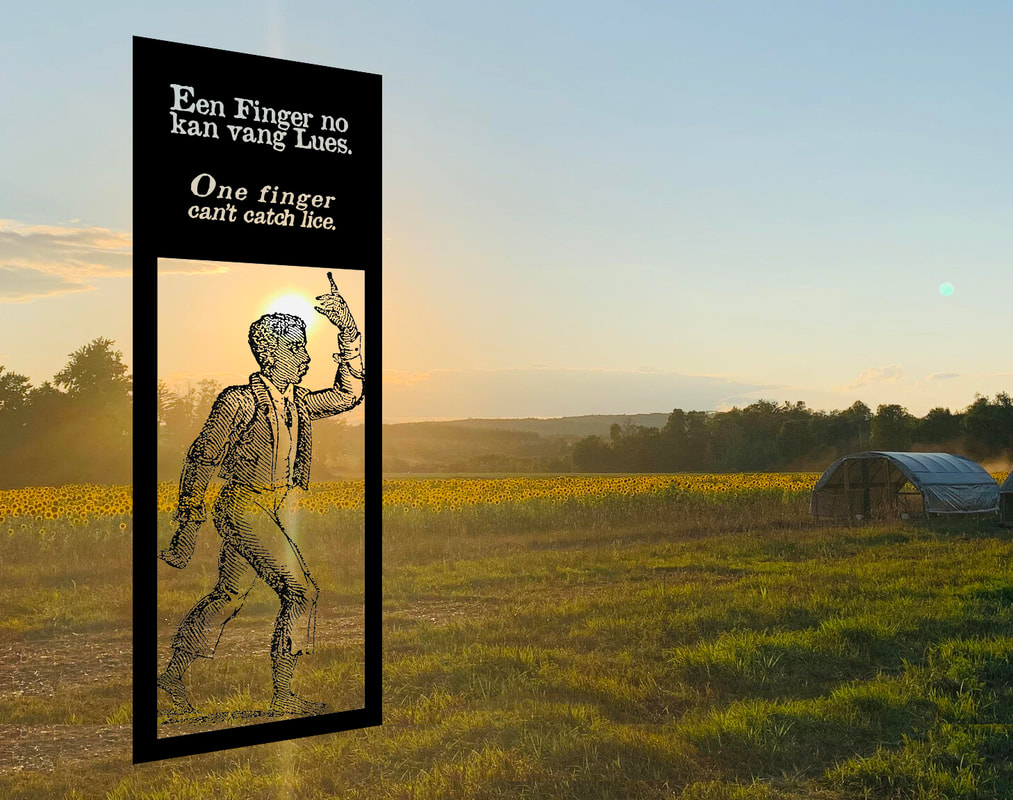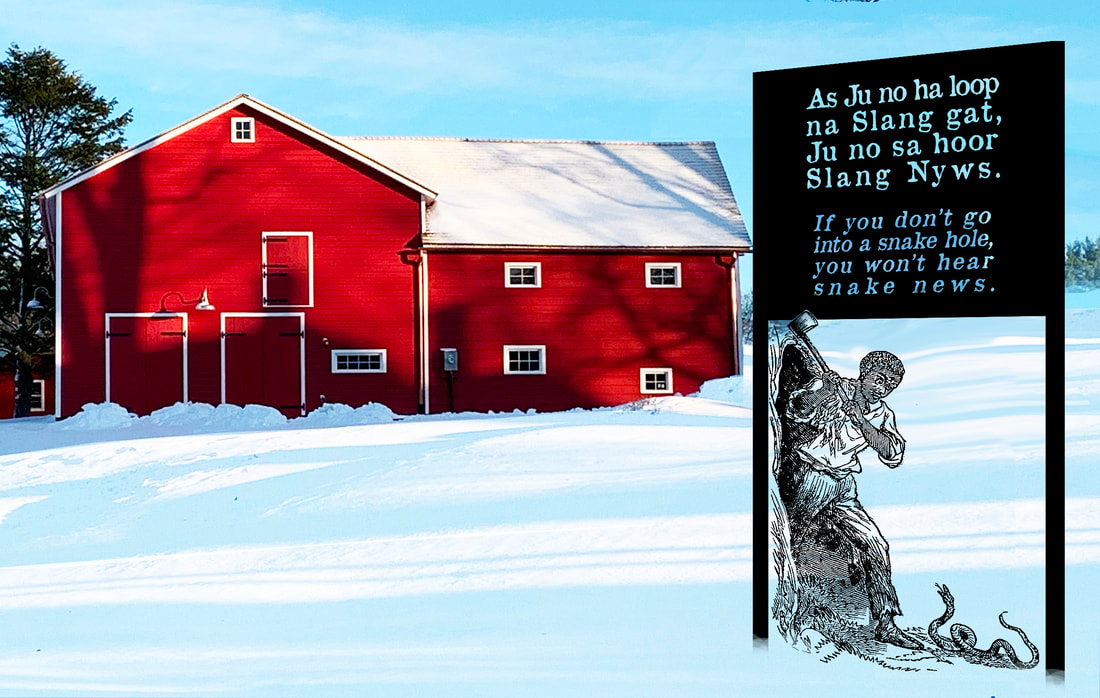Blauvelt Blues:
Afro-Dutch Voices of Rockland County
“Blauvelt Blues” is a combination of sculpture and storytelling that seeks to visualize the history of Afro-Dutch pioneers of the region that is often unwritten and to give voice to those who have often remained unheard. As a person of mixed race, I am always sensitive to the evidence of cultural hybridization that is the result of colonization and slavery – events which make up the DNA of this country, as well my own.
|
The restoration of the 1796 "Blauvelt Brothers" barn inspired the question: “Who worked in this barn?” Of the 43 heads of family named Blauvelt listed in the 1790 census, 22 owned between 1 and 9 slaves. Clearly, at the time of the construction of the barn presently on the Cropsey Community Farm, there were quite a few Black Blauvelts – 69 of them to be exact.
|
I wondered: What would this Dutch spoken by African-Americans in colonial Rockland/Orange County have sounded like? According to the authors of “Die Creole Taal”, a collection of language primers produced by 17th Century missionaries to teach reading and writing in Dutch colonies, a creolized version of the Low Dutch language called “Negerhollands” was commonly used as a lingua franca between slave owners and their enslaved workers. In the New Netherlands, this local dialect was known as “Jersey Dutch.”
The steel panels of “Blauvelt Blues” combine some of the “Jersey Dutch” proverbs with the humanistic depictions of emancipated slaves borrowed from 19th century Abolitionist and Anti-Slavery literature. “Blauvelt Blues” seeks to acknowledge the voices of those Black souls whose genius and unpaid labor nourished the success of farms like the ones once owned by Blauvelts. I see each panel of “Blauvelt Blues” as a spark in a series of potential teachable moments, seeds in a fertile ground where engagements with history and language can become as palpable as the fruit of sustainable agriculture.


